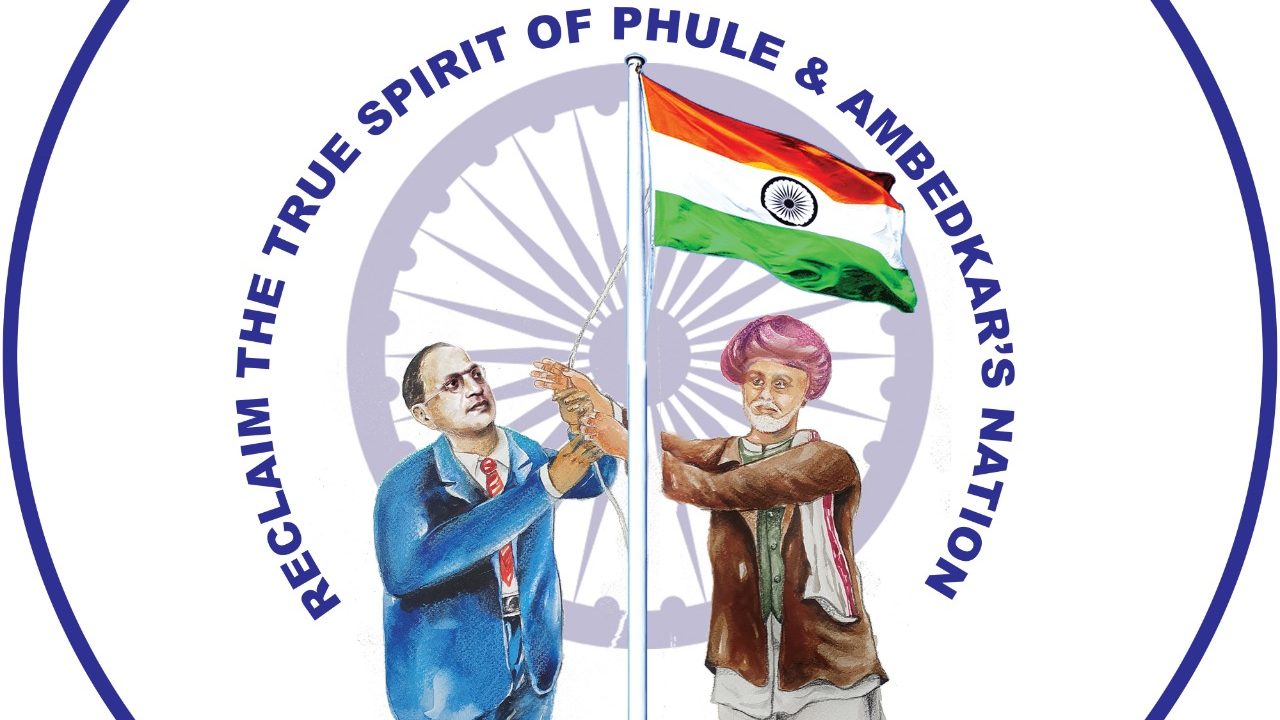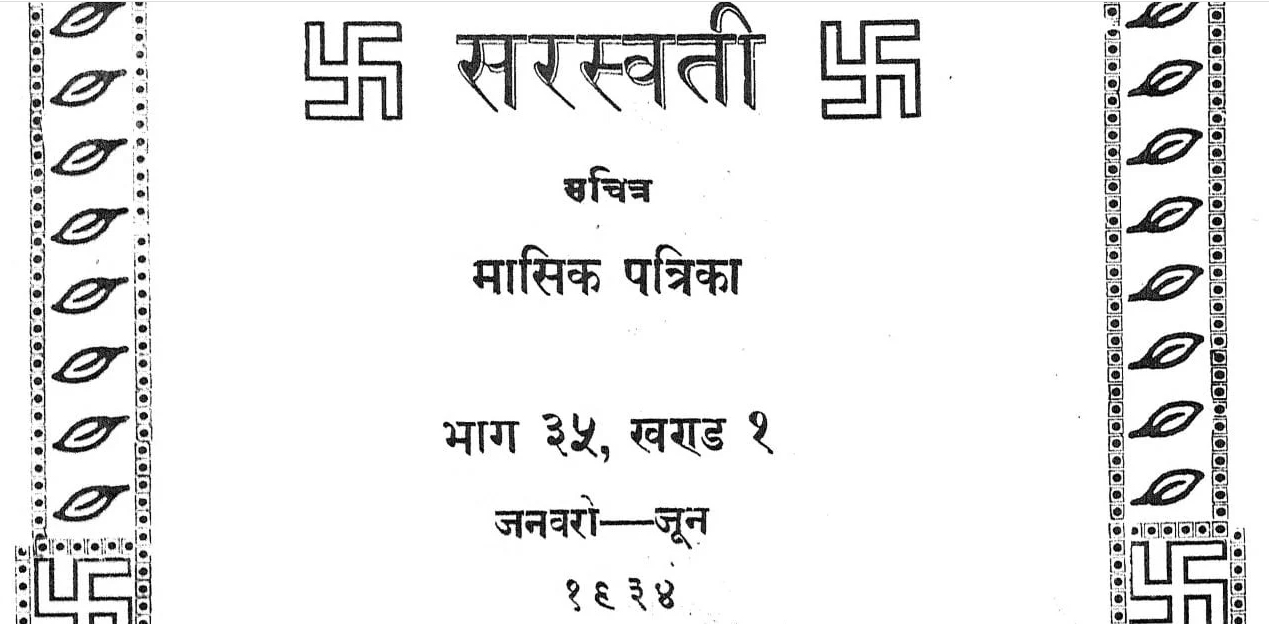
Bharat Mata’s daughter? But the Hindutvavaadi motherland produces only sons – Hindu, savarna sons – to protect their mother’s ever fragile honour.
Let us begin these reflections with a moment from Nisha Pahuja’s disturbing film the World Before Her, which tracks two young women – Ruhi, a beauty pageant contestant, and Prachi, a trainer with the Durga Vahini, the women’s wing of the Vishwa Hindu Parishad.
While Ruhi and her fellow participants emerge as conventional and pallid, Prachi is fierce and questioning, independent-minded. But towards the end of the film, you realize that for both women (and not for Ruhi alone), this period of training was only a small window that gave them a brief glimpse of broader horizons. It was only a brief moment of excitement and hope, and what seemed like freedom, before real life – the real lives of real women – closed in on them.
Throughout the film, Prachi has been telling the filmmaker that she will never get married, she will live her life as a Hindutva activist. She emphatically rejects the ordinary life of a wife and mother. But towards the end, her father declares quite explicitly that this is out of the question. She can never be a full-time activist. Of course, she must get married. She has a womb, do men have wombs? Her responsibility then, is to bring up children. Initially, in this sequence, Prachi argues against him vehemently, verges on the insolent, but gradually she falls silent. Her expression, still rebellious, but devastated, resigned, signals to us her recognition that the daughter of the Hindu nation is only in training to be a mother. That is the highest ambition she can have.
Provided she has been born into a savarna family. Provided she follows the rules.
So who are the unruly daughters then? The recalcitrant, the wayward ones? This piece is an idiosyncratic journey across the landscape of potential and actual resistances to the Hindutvavaadi project, resistances that emerge from within, that disrupt the self-fashioning of what has come to be called Hinduism. It goes without saying that this journey is merely a bird’s-eye view of a dense, complex landscape of resistances – we are just about skimming the tops of trees. The stories here are not exceptions, make no mistake about that.
The mother as map
Before we acknowledge the daughters, we must begin with the RSS Bharat Mata, always with the RSS bhagwa jhanda in her hand, never ever shown holding the national tricolour, but invoked nevertheless to violently challenge the patriotism of others. Behind her, a map of Akhand Bharat, stretching across Afghanistan, Myanmar, Tibet and of course, Pakistan and Bangladesh.

And yet, when it comes to maps depicting the current political boundaries of their Bharat Mata (as opposed to their delusional fantasies), the RSS can end up being … so anti-national. In 2015, the RSS mouthpiece, Organiser, used a map of SAARC countries in an article “Quest for Reintegrating SAARC” where parts of what India calls “Pakistan-Occupied Kashmir” were shown as part of Pakistan. Tendering a written apology, the editor reiterated the Organiser’s commitment to the “unity and integrity of India” and explained that the issue had inadvertently used a map of South Asia obtained from the web source that did not show certain parts of Pakistan-occupied Jammu & Kashmir as Indian territory…
Interesting. A web source with a map of South Asia, freely available to the whole world, shows Indian territories “all wrong”, and poor Organiser made a mistake in using that map. The whole world, in other words, sees one kind of map, while Indians living in India are protected from the world’s opinions of the borders of China, Pakistan and India. Magazines that depict the boundaries of India “wrongly” are banned from entry or the map covered up. In such an incident with The Economist (19 November 2011), the Government of India covered the map of South Asia, accompanying an article (“Unquenchable Thirst”) on water resources in the region, with a sticker. But defiantly, The Economist added the following statement:
Missing map? Sadly, India censors maps that show the current effective border, insisting instead that only its full territorial claims be shown. It is more intolerant on this issue than either China or Pakistan. Indian readers will therefore probably be deprived of the map in this briefing. Unlike their government, we think our Indian readers can face political reality. Those who want to see an accurate depiction of the various territorial claims can do so using our interactive map at Economist.com/asianborders.
So what if you can’t control facts and images circulating globally? You can control your own citizens, especially if you are the world’s largest democracy. Earlier governments only waxed indignant over the world’s ignorance, this RSS-backed regime in May 2016 came right out with a proposal for a law that would punish, with imprisonment and fine, those who wrongly depicted the borders of India. The draft Bill will also ensure that online platforms like Google will have to apply for a licence to run Google Maps or Google Earth in India. Let’s see where this goes – I predict that apart from harassing and arresting people who protest Hindutva politics, this law will leave the CEO of Google severely alone.
Good mother/bad mother
Returning to Bharat Mata then, fair-complexioned, saffron flag-bearing, ready to bear a thousand sons. Several writers have demonstrated how this image of the mother, far from being eternal, was constructed in the 19th century by the political project of Hindutva; and how this mother can only consider to be her sons, people defined by Hindutva as “Hindus”, never Muslims.
This mother is imagined as a body:
Do you see this map? It is not a map but the portrait of Bharat Mata: its cities and mountains rivers and jungles form her physical body. All her children are her nerves, large and small … Concentrate on Bharat as a living mother, worship her with nine-fold bhakti.
(Aurobindo Ghosh, cited by Shoaib Daniyal)
If the Nation is a body – the body of one’s own mother – then it precedes its children; or is constituted by its children in Aurobindo’s vision (the “nerves, large and small”). From this image follow the implied hierarchies of birth and origin among the children (large and small, older brother and younger brother, sons and daughters). From this follows the idea that the children cannot leave the mother, for that implies amputation, the dismembering of the maternal body, an act that none can survive – neither the mother nor the children.
This mother is the mother who is the nominal head of the patriarchal household, whose power flows entirely from her maintaining the rules of patriarchy, blood purity, family hierarchies. She acts as the agent of her son or sons as long as she performs these functions. But this RSS-constructed, savarna, North Indian, Aryan vision of the mother is not the only one on this subcontinent. Sadan Jha, for instance, has drawn our attention to the ascetic Banga Mata of Abanindranath Tagore, imagined at the moment of the partition of Bengal.
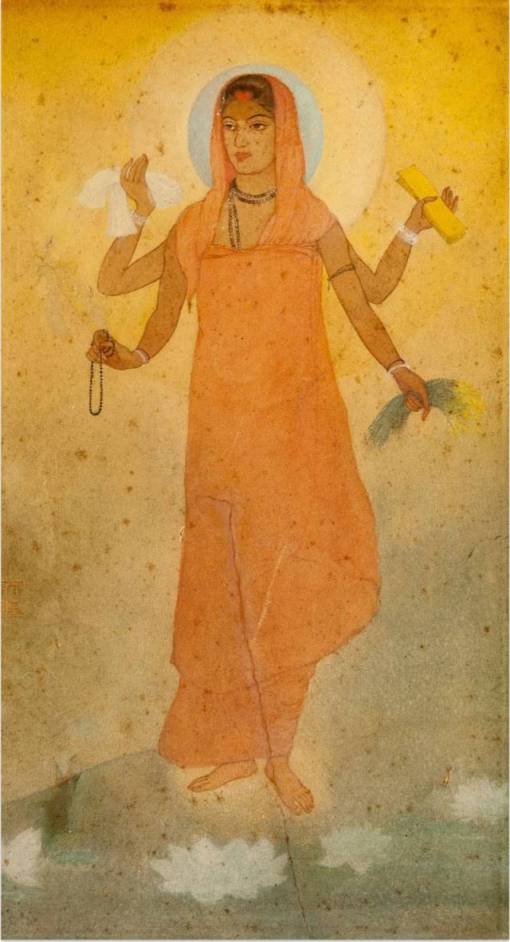
Calm, reflective, a saffron-clad ascetic, inward-looking. She bears a book, sheaves of paddy, a piece of cloth (symbolizing the swadeshi movement) and a garland in her multiple hands. A far cry from the monochromatic RSS Bharat Mata who carries but the saffron flag, whose only passion is for Hindutva, not the Indian nation.
Then there is the mother, Kerala Maatavu, that J. Devika has brought to our attention.
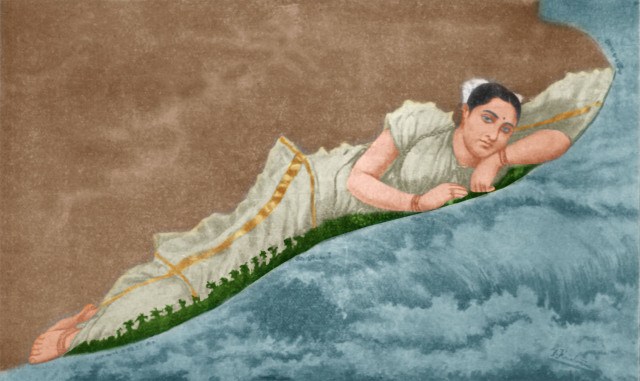
Mother Kerala, from a women’s magazine Shreemati (1935), is not wan and ascetic like Abanindranath’s Banga Mata – she is languorous, dreamy, looking away from the nation, away from her sons, out across the Arabian Sea with what Devika characterizes as a “wistful, Westward gaze”.
This mother’s gaze acknowledges that seas and oceans do not separate land masses, but link and connect them through trade and cultural interchanges, producing what Hoskote and Trojanow term “Confluences”. Kerala has for centuries had trade links with the lands across the Arabian Sea, and its cosmopolitan culture long predates any 20th-century ideas of cosmopolitanism emanating from that Other West – Europe. Kerala’s ties to the lands across the Arabian Sea are still stronger (in Malayalam, in its cuisines, in the Malayali imagination) than its identification with a myopic, ignorant, Hindi region-centric Hindutvavaad, which understands nothing of Kerala’s history and rich heterogeneous pasts. Typically, to take just one instance, BJP President Amit Shah termed Onam as Vamana Jayanti, turning it into a festival celebrating the Brahmin Vamana, when in fact it celebrates the righteous Asura king Mahabali, tricked by Vamana into giving up his kingdom (more on Mahabali in a minute).
The Hindutva or Hindu nationalist project is predicated on the construction of a North Indian savarna-directed homogenization of “Hinduism” – which is after all only a relatively modern late 19th-century label for a wildly heterogeneous set of practices across this land-mass that came to be called India, practices that continually disrupt the Hindutva project from within.
There are other, more ancient visions of female power in this land than the RSS Bharat Mata – black goddesses who predate the patriarchy normalized over centuries by Aryan migrations from the north, who were potent, mysterious forces that offered their devotees annihilation, blood and rage. Anthropologist Lynn Gatwood offers one historical reading of such black goddesses of the southern part of the Indian sub-continent. In her book Devi and the Spouse Goddess, Gatwood makes the argument that the wild, independent, sexual tribal goddesses of pre-Vedic times were domesticated and tamed by brahmanical priestly classes in the process of pacification of the non-Aryan peoples of the South. They were domesticated by being “spousified” – they were installed as the wives of Aryan male gods. In addition, we see the domestication of other kinds of divinities with complex histories of formation – also black, some ancient forest gods, many non-human – such as Ganesha, Ayyappa, Skanda/Subramanian who become the children of these newly formed conjugal couples. The libidinal excess that cannot be contained in these narratives escapes into myths such as the birth of Ayyappa from Shiva and Vishnu (in the temporary form of Mohini) – born from Vishnu’s thigh.
However, the shrines to these deities continue to have an independent presence in the cosmological landscape, and attract large numbers of worshippers. The wild, undomesticated goddesses are still present as living principles – Ellaiyamman, for example; and Sheetala Mata, who protects children from small pox.
I came across two images of Ellaiyamman, one black, fierce, with blood-red lips; the other, domesticated, fair-skinned, Aryan-featured. Both these images were posted on a website that celebrates the goddess, and it seems Mariyamman or Kaumari, another village goddess, has also been incorporated into this deity.

As Vidya Dehejia puts it:
She is encountered in manifold guises. In a simple wooden shrine in the town of Chhatradi in the Himalayan foothills she stands as a glowing brass image, smooth and sensuous, adorned with jewels and silks. On a hilltop near Guwahati…worshipers invoke her presence in the simple form of a cleft in a natural boulder, filled with water from an underground spring…She is a bizarre fiendish figure riding a wild ass with a third eye in its flank in Tibet; in southern Madurai she is a dark stone figure concealed beneath crown, jewels, silks and flowers. And in the numerous villages of the Indian subcontinent, she is little more than a vermilion smeared stone or mound of earth. (“Encountering Devi” in “Devi: The Great Goddess”).
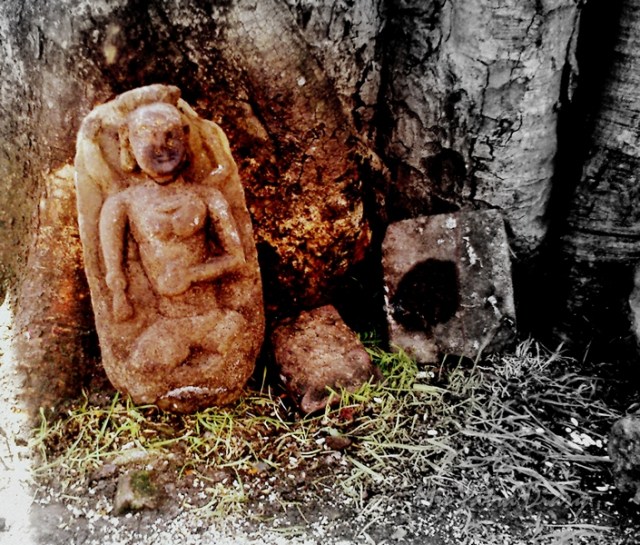
I have written elsewhere of the contemporary dancer Chandralekha’s insistence on disrupting the fertility/maternality dyad. For her, the fecundity principle is a mysterious force, over time being sought to be domesticated into the figure of the “Mother goddess”. Chandralekha demands:
“On what basis do you call them mothers, these dynamic figures of fierce power who look so calm and confident on the bull, lion, tiger; who wear weapons as ornaments in their hair, who are not at all maternal?” (“Who are these age-old female figures?” The Economic Times, March 8, 1992)
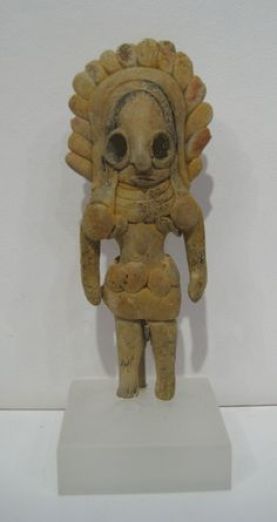
Unruly daughters of unruly mothers?
I use “daughters” in the sense of secondary to the patriarchal family but necessary to its continuity; secondary to the project of Brahmanism and Hindutva – the clear convergence between the two of which is emerging more clearly in this phase, with the sidelining of Savarkar’s modernist and rationalist Hindutva project, which was about consolidating and militarizing the Hindu community against Muslims (and Christians).
These “daughters” are necessary to produce a certain brahmanical Hindu identity by being the outside, that constitutive outside that sets up the Hindutvavaadi identity. For the RSS Bharat Mata, all other than her savarna sons can only be expendable daughters.
By “daughters” then, I mean the Adivasis – and I use this term in its literal sense as well, “first inhabitants” – to refer to both the Tribals and Dalitbahujans.
Let us consider some of the most fascinating revisionist accounts of popular Hindu festivals from the perspective of the Adivasi-DalitBahujan Daughters of the Nation. Of course, they are not really revisionist, they simply bring to the surface older histories that have long simmered below the skin of mainstream savarna Hindu society, and are now breaking the surface of Hindutvavaadi narratives from within.
Ambedkarite intellectual Kanwal Bharti reminds us that the myths behind almost all Hindu festivals involve the defeat of Asuras by Devas – whether Dussehra, Diwali, Onam or Holi. Bharti identifies these Devas as Brahmins, and the defeat of the Asuras is the defeat of anti-brahmanical and pre-brahmanical ways of life and religious practices – in forests, and outside centres of established kingdoms. Very often this defeat is by trickery – (Mahabali by Vamana, Eklavya by Dronacharya) – and by the co-option of willing elements in these non-Brahmin societies – Vibheeshana, Prahlada.
Bharti retells the story of Holi to illustrate this claim. The pre-Hindu spring festival of Holi has a later Hindu mythology that draws it into the Aryan configuration of a perennial Deva-Asura confrontation. Asura Hiranyakashipu seeks to kill his pious son Prahlada in various ways because he has become a devotee of Vishnu. Eventually, Hiranyakashipu (himself pious, but too arrogant for the gods) gets his sister Holika, Prahlada’s aunt, to sit with her nephew on her lap in the sacrificial fire, for she has a boon that fire will not burn her. Her boon fails, Prahlad survives by chanting Vishnu’s name, and Hiranyakashipu is slain by Vishnu who has taken the form of Narasimha. On Holi, effigies of Holika are burnt to symbolize this defeat.
But what was it a defeat of? In Kanwal Bharti’s telling, Prahlad turns to the brahmanical religion (Sanatan Dharma) while Hiranyakashipu and Holika continue to fight Brahmanism.
A similar reversal of narrative is effected by M.B. Manoj, who says that by reading Onam through the eyes of Dalits, the festival loses its natural association with the Malayali identity. In fact, in the words of Manoj: “Onam is a black day for Dalits, a day of murder, even as it is a day of happiness for the upper castes.”
From this perspective, the coming of Onam also marks the coming of the caste system and slavery to Kerala. Manoj talks about Dalit folk songs that criticize the upper-caste nature of Onam and its vegetarianism, as well as songs that criticize the temple-entry proclamation of Kerala. There is a realization among Dalits, says Manoj, that Onam is a celebration of the murder of their king by the upper castes. As part of this realization, Dalit movements, and especially the Indian Dalit Federation, have observed hunger strikes during the Onam festival. Manoj remembers participating in one of these hunger strikes in Idukki town in Kerala during his college days. Manoj stresses that most Dalits, Tribals and backward castes eat meat during Onam and their cultures fall outside the cultural milieu of Onam. Therefore, for the lowered castes, Onam is neither a cultural nor a national festival, but a festival of the upper-castes.
The presence of powerful women among these Adivasi-Dalitbahujan communities who must be killed, maimed, humiliated, has of course, not been gone unnoticed, including among feminists, from Iravati Karve to Nabaneeta Deb Sen and Uma Chakravarty. Surpanakha, for example, has been read as a woman unashamed of her own sexual desire, who was never taught that she must be passive and submissive, and must learn that lesson brutally by having her nose cut off. Uma Chakravarty in a fascinating essay, reads Valmiki’s Ramayana as a reconstruction of multiple elements of extant stories across South and Southeast Asia into a particular narrative whose aim is to establish a new norm over the variegated practices of the land – the Aryan, patriarchal, patrilineal order of sexuality and property. Thus, the southern people of Lanka, where women were freer, have to be subjugated and taught proper codes of sexual conduct, the people of the forest (the vanaras) are pacified into the Aryan king’s loyal army, and Sita is instructed in the dangers that lie in wait upon crossing the limits set by the Lakshman Rekha.
(“The Development of the Sita Myth: A Case Study of Women in Myth and Literature”, Samya Shakti, 1 July 1983)
And as Kanwal Bharti reminds us, the young princes of Ayodhya while in exile, travel deep into forests establishing, by armed assault, Aryan brahmanical rule over the original inhabitants – Asuras of various kinds – who are killed for disturbing the austerities and ceremonies that sages insist on performing in their forests.
Or take the story of Mahishasur and Durga, which at one level, is yet another account of the defeat of Adivasis (in the broad sense in which I am using it here), by Brahmins using trickery. But a feminist reading produces another level of complexity.

While the defeat of the demon Mahishasur by Durga is the occasion for one of the most important Hindu festivals, Durga Puja, Dalitbahujan students of Jawaharlal Nehru University had been celebrating Mahishasur Puja for about five years before the big attack was launched on the university for being anti-national in 2016. Indeed, the “demon worship” too at that point became one more factor in the “demonization” of JNU as a space of incomprehensibly anti-civilizational practices. This charge reached Parliament, where the Minister for Human Resources and Development emotionally read out the charge of demon worship from a police report.
The journal Forward Press had for some years been reporting on Mahishasur Puja in eastern India by Adivasis, and publishing paintings of Mahishasur. This led to the police raiding its office.

The Indian government has classified the Asur tribe of Jharkhand of more than 10,000 members as a “Particularly Vulnerable Tribal Group”, and UNESCO has described their language – spoken by some 7,000 individuals – as “definitely endangered”.
The Asurs, who claim ancestry from Mahishasur himself, believe that the Devi Mahatmya story of the Markandeya Purana, which describes the birth of Durga and her nine-day long battle with Mahishasur, is biased. According to the Asurs, the birth of Durga from the conjoined powers of Brahma, Vishnu and Shiva was a “crooked conspiracy” hatched because Brahma had blessed their king Mahishasur with a boon that no man or god could kill him. Hence, the more traditionally inclined members of Asurs sometimes even choose to completely isolate themselves and mourn Mahishasur’s death during the period of the Durga Puja.
The Santhals of Bengal too, have their own story about Mahishasur. This is how Santhal musical genius Bajar Hembrom described to Kunal Deb the origins and meaning of the Dashoi festival, which Santhals observe on the last day of Durga Puja (translated from Bengali by Madhusree Mukerjee).
It is clear that the mythology is a sorrowful acknowledgement of the dispossession of Adivasis from all that was once theirs – jal, jangal and jameen.
“A long, long time ago there was the Har kingdom on earth. That is, a Santhal Raj. Our king was Adur. He was also called Raja Debi. He was as famed for his governance – for the way he looked after his people – as for his heroism. He could fight a tiger with his bare hands; he could alone stop the rampages of crazed elephants. His soldiers too were very fierce. Nobody could beat them in battle. Raja Indra had been crushed many times in battle against him.
“But Indra too was not someone to give up. This time, in order to defeat Raja Debi and seize the Santhal kingdom, he resorted to deceit and trickery. He sent the dancer Durga from his heavenly court to earth … (and) Durga had no difficulty in seducing Raja Debi with her beauty and dance.
“Not long after Raja Debi got married. His queen was Durga. She started sending news to Indra about when the raja slept, when he was unarmed, when festivals preoccupied his soldiers and commanders, and so on. Indra put these snippets of intelligence together to formulate a plan. He decided the day and time, and he imprisoned Raja Adur after a sudden attack. The soldiers were taken by surprise and could not recover from that assault. Debi’s kingdom was easily seized. Our Santhal ancestors lost their king and their kingdom. Everyone scattered where they could.
“The trusted guards and friends of the king started to look for their beloved monarch. Disguised as women, their weapons concealed, they wandered and danced in villages and towns, in many places, always searching. If they hear the faintest reply to their mournful song, from the imprisoned raja, out will come the weapons from under the feminine clothes of the warriors. They will fight and recover their lost kingdom. And when Raja Adur Debi returns, they will get back their Santhal Raj, their lost wealth, their forests, their rivers, everything.
“The Dashoi dance is on the last day of Durga Puja. You worship Durga. We search for, we still search for, our lost Raja Debi. You call him Asur.”
The political face of the Hindutvavaadi project shows the real disdain for Hindu folk tales, oral ballads and other practices of many, many communities of believing Hindus. Hindutvavaad is shamed and embarrassed by the glorious pagan aspects of Hinduism, and the refusal of Hindu practices to be tamed into the pallid, rigid North Indian upper-caste version that is the basis of the Hindu nationalist project.
Now, the role of Durga here as a mere “seductress” makes the story more complicated. Who is this Durga? Is this the same deity worshipped by savarna Hindus? Perhaps not.
A feminist reading must take into account two elements – the Durga/Kali image as well as the prostitute image.
On the first aspect, Mrinal Pande writes:
“It is instructive that neither side denies that Durga is a powerful symbol of non-conformism. She is non-submissive – she will not subordinate herself to a male deity, and she also excels at what is deemed an exclusive male occupation, fighting in battle. What is also noteworthy is that for all her heroic exploits described in both local myths and classics, Durga never lends her power to the male gods of the mainstream pantheon. It is they who lend her their arms like the chakra (Vishnu), trident (Shiva), bow and arrow (Vayu) and so on. They give up their inner strength or fire to create her, and in doing so, surrender their potency to her…
Durga’s historical origins are embedded firmly among the indigenous pre-Aryan cultures of India. The Vedic tradition has no goddess similar to Durga, the warrior goddess. The early Puranic references to Durga, from Mahabharata’s Virat Parva (the fourth book of the epic) to the later Harivansh Purana and Vishnu Purana, also associate her with the Sabara Tribals residing among the Vindhya mountains. This was initially an intractable area described as awfully hard to access – Durgen gamyate, hence the name Durga. The mountainous region, with thick forests and inhabited by wild tribes and animals, was peripheral to civilized society.
It is here that the concept of Vindhyavasini Durga was born. As Kaushiki, or shedder of the chrysalis, this virgin goddess became the mother lode in time, for various powerful goddesses in the mainstream and various substrata of Indian society…
…this extremely powerful, militant armed goddess arrived as Durga, the mainstream Hindu goddess of peasants and traders, only during the medieval period. She brought with her non-Aryan habits from her tribal background and continued to disdainfully fob off efforts by divine and demon male suitors to woo her, and also to enjoy offerings of liquor (madya), meat (maans) and blood (rakt) made in her honour.
Multiple myths were created in time and began to be circulated about Durga by a string of Puranas. In Vishnu Purana, the mainstream male god Vishnu requests her to come down from the mountains and enlists her aid to kill a demon king threatening an infant Krishna. In Devi Mahatmya, another male god, Brahma, who is helping Vishnu kill two demons, enlists her help. Durga ultimately kills the demons as Vishnu sleeps. The Skanda Purana shows that Durga is none other than Parvati, a mainstream goddess. It says that when a buffalo demon named Durga threatened the world, Shiva asked his wife Parvati – mother of four (Lakshmi, Ganesh, Kartikeya and Saraswati) – to become a warrior goddess and slay the buffalo demon. [T]he myth says Parvati killed the demon as Durga. After braving a cosmic crisis and slaying the enemy, she retained this name along with her newly rediscovered militancy and many-armed form.
The first images of Durga – armed to her teeth – slaying Mahishasur, a semi-male buffalo, begin to be visible throughout India around the fourth century CE. Her festival held at harvest time, the precursor to today’s Durga Puja, also associated her powers of fertility with not so much the womb, but vegetation (as Shakabhari). Motherhood of the genetic sort was not her priority and as an armed warrior and protector of men and women, it became entirely appropriate that this combative Durga be kept energized with blood offerings and wine as vital nourishment for her body and soul. Thus, in many respects, the Durga of the Puranas since the very beginning negates the misty-eyed and maternally inclined Mata Rani model being defended so fiercely by bhakts today.
So, Durga never gets fully domesticated as Shiva’s wife Parvati, retaining these fierce and unpredictable, untameable elements.
The second element, in the Adivasi telling that must recover Adivasi masculinity from its defeat by Brahmanism, is that of Durga as a mere agent of Brahmanism, a “seductress”, a prostitute, a spy. From Mrinal Pande’s account, it is clear that that the Durga of Adivasi myth refers to the general principle of female power rather than to the specific goddess worshipped as Durga.
But another set of unruly daughters, the sex workers of today, reclaimed even this Durga
The Minister for Human Resources and Development indignantly reported in Parliament that one of the posters for Mahishasur Puja in JNU had termed Durga a sex worker or prostitute. [We do not know if in fact such posters exist. The Minister read out the allegation from a written complaint by the RSS’ student wing, the Akhil Bharatiya Vidyarthi Parishad (ABVP).]
Be that as it may, in response, a sex workers’ union wrote the following letter to JNU students:
Dear Students of JNU,
Salute! Jai Bhim! Laal Salam! We will win this war against sedition! March 3rd, International Sex Workers Rights Day, Zindabad!
We write from the sex workers’ rights movement to hail your struggle and to add to the discourse you have sparked. We would like to discuss why using the term sex worker in the alleged pamphlet in JNU on Mahishasur Martydom Day is a concept fraught with the Whore Stigma. The use of the politically correct sex worker instead of the commonly used “prostitute” does not take away from the fact that it is used to depict an insalubrious deed. The use of this term has only led to more misunderstandings of the term itself.
‘Sex worker’ is the term used by the sex workers’ rights movement to claim dignity to the work adults do consensually by providing sexual services for money. The sex workers use this term to give dignity to those that exchange sexual services for money but the use here is to supposedly strip the “goddess” in this instance, of any dignity. The term since then has taken a life of its own. From a politically correct term it is now being used to describe anti-nationals, anti-goddesses even anti- patriarchy! But the thinly veiled contempt for the sex worker is huge in every utterance, from the Hindu Goddess Durga to the “anti-national” women students in JNU…
… The sex workers’ rights movement would like to bring to your notice the fact that it is the randi [whore] stigma that pushes sex workers outside the rights framework, effectively cutting them off from privileges and rights supposedly accorded to all citizens irrespective of what they do for a living …
We also demand Azadi!
Azadi from discrimination, azadi from the violence of a judgmental attitude, azadi from the multiplicity of injustice meted out to sex works, azadi from the loose use of the politically correct but deeply stigmatised term “sex worker”. Sex workers demand azadi from ‘Goddess’ Durga.
What the recovery of older stories that mainstream Hindu society remained unaware of tells us is that the domestication of the goddess and the pacification of non-Aryan peoples was never completely successful – the project of homogenizing Hinduism and subjugating pre-Aryan deities remains an incomplete project to this day. The outside keeps fracturing the boundaries of what is sought to be termed “Hinduism”, and the simplistic Hindutvavaadi narratives forged in the late 19th and early 20th centuries, with their black and white Asuras and Devas, continually come up against the challenge posed by alternative narratives that robustly survive.
Asura kings Ravana, Hiranyakashipu and Mahabali are revered as scholars and as devout, even noble figures, by otherwise devout Hindus who worship Rama and Vishnu. In Jodhpur, the town of Mandsaur considers itself the birthplace of Mandodari, Ravana’s wife, and about 200 families consider themselves to be descendants of Ravana. There are two temples to Ravana here, and his effigy is never burnt on Dussehra. Ravi Ranka, a cloth merchant of Mandsaur explained to a journalist:
“We remember Ravana for his knowledge of all the Vedas and his devotion towards Shiva. Burning his effigy is seen as a sign of disrespect towards him and so, ‘Ravana dahan’ is never done in this town.”
The residents seek to pacify Ravana by enshrining him as a devotee of Shiva, but the narrative of a Hindutvavaadi Ramayana is sharply disrupted nevertheless.
(Shiva of course, contains within himself multitudes, and is not quite the clean living, fair-skinned Aryan god. Nor is Krishna, the dark-skinned Yadava, who is another instance of the incorporation of pre-Aryan, sexually freer elements into Brahmanical Hinduism.)
Villagers of Drongiri in the Uttaranchal Himalayas, don’t worship Hanuman, for he defaced the mountain they worship by breaking off an entire side of it, when he was dispatched to pick the herb Sanjivani to revive Lakshman.
The women of rural Bengal who sing songs berating Rama for abandoning Seeta.
Unruly daughters all.
Into this picture of disruptions of the homogeneous Hinduism project must be brought also Pootana, a bad mother, the Asura woman who tried to kill the baby Krishna with milk from her poisoned breasts. The baby suckles her life out of her, and her body is cut into many pieces and burnt outside Gokul. While her body was burning, the fragrance of agar filled the air. Because the Lord himself had fed on her milk, she was redeemed. The good son who can bring about the salvation of his wayward or wicked mother by killing her is another fascinating recurring image – Renuka and Parashuram spring to mind. But what is remarkable about Pootana is that other texts such as the Garga Samhita and Brahma Vaivarta Purana reveal her as the daughter of Mahabali in a previous birth, seeking revenge for the treacherous murder of her father by Vishnu, of whom Krishna is an incarnation. Such counter narratives seek to redeem Asura “wickedness” and refashion Asuras as characters with more complex motivations than simply the evil hating the good.
Bharat Mata, in the hands of the RSS, is merely a sly and deadly weapon in the armoury of Hindutva, as is the cow. When they drop off from the saffron banner bearing their names, the mother in everyday life is the woman abandoned in Vrindavan or among the teeming millions at the Kumbh Mela by her devout and dutiful sons; and the cow that pathetic beast roaming the streets of cities eating plastic; when she dies, her devout sons will not touch her carcass, but violently compel the Dalit, that unwanted expendable daughter of Bharat Mata, to lift it out of their sight.
But this Bharat Mata is a mere cardboard cut-out, and the millions of living, breathing forces that challenge her erupt from out of the space sought to be labelled Hinduism. These unruly daughters are not only the Adivasi-Dalitbahujan who have continually refused to be integrated into mainstream Hinduism, but they are also the 21st-century urban rebels.
There are the young women reclaiming their menstrual blood through the “Happy to Bleed “campaign.

The women of Pinjra Tod (Break the Cages) who struggle for a safe campus, challenge nationalism and explicitly reject the pressure to be Bharat ki Mata.
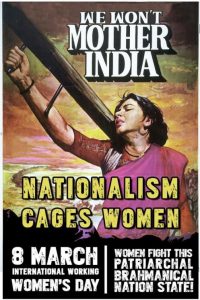
These are just two examples of the million mutinies across this land today.
This, finally, is the image I conclude with, artist Lal Ratnakar’s Bharat Mata – simultaneously the Mother whose proud calm gaze refutes the claims of Hindutva, and an Unruly Daughter – claiming freedom for herself as much as for the Mother.
Or in Pinjra Tod‘s words – freedom from the Mother, freedom for the Mother
Ma se Aazadi, Ma ki Azadi.
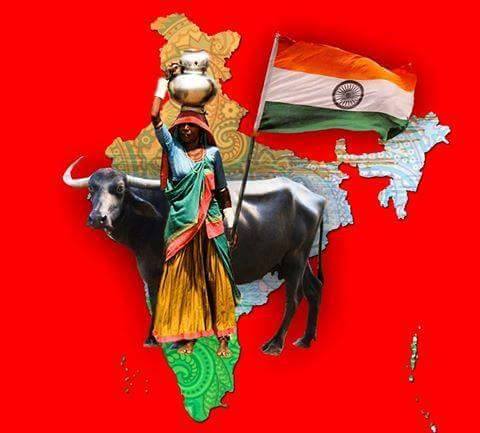
There she stands, a dark-skinned, straight-backed, Dalit-Adivasi rural woman, accompanied by the black buffalo, not the sacred cow, claiming the Nation for unruly daughters and unruly nature.
Whether rejecting the Nation altogether or reclaiming it from the RSS Bharat Mata, these unruly daughters remind us that the Nation does not precede its people, but is shaped by them.
Based on lectures delivered at School of Women’s Studies, Jadavpur University, Kolkata (April 2016), South Asia Research Institute, Australian National University, Canberra (November 2016) and for an event organised by Academics for Democracy, Chennai (May 2017). I am grateful for feedback, suggestions and comments received at these talks.
This article first appeared in Kafila. It has been republished here with the author’s permission.
For more information on Mahishasur, see Mahishasur: A People’s Hero. The book is available both in English and Hindi. Contact The Marginalised, Delhi (Phone: 9968527911).
Or, find the book on Amazon: Mahishasur: A People’s Hero (English edition), Mahishasur: Ek Jan Nayak (Hindi edition)
And on Flipkart: Mahishasur: A People’s Hero (English edition), Mahishasur: Ek Jan Nayak (Hindi edition



